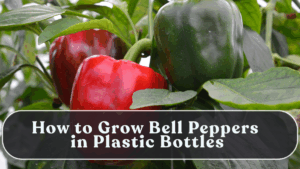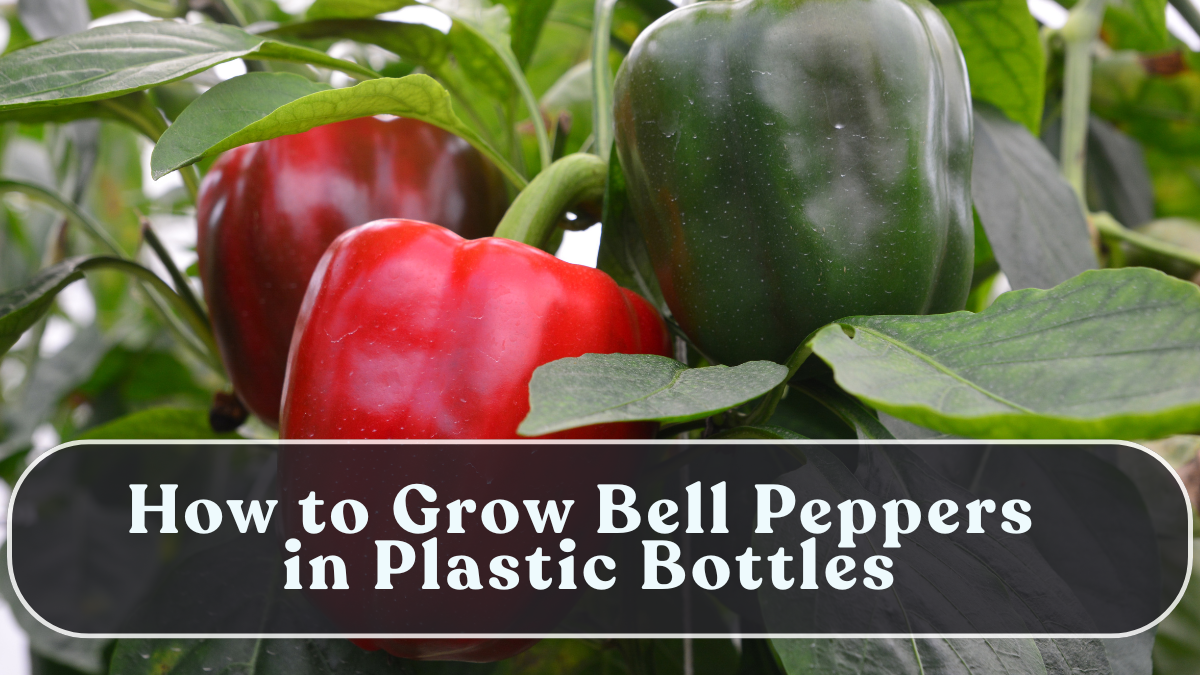Growing bell peppers in plastic bottles is one of the easiest and most space-saving ways to enjoy homegrown vegetables. Whether you have a small balcony, terrace, or sunny window, you can use recycled bottles to grow colorful and crunchy bell peppers. This method is eco-friendly, affordable, and surprisingly productive if done right.
Let’s go step-by-step to grow healthy, vibrant bell peppers right from your recycled bottles.

Why Grow Bell Peppers in Bottles
Bell peppers are rich in vitamin C, fiber, and antioxidants. They grow well in containers and need minimal care once established. Using plastic bottles makes it easy to manage space, control soil quality, and reuse waste materials.
Advantages include:
-
Perfect for small balconies or windowsills
-
Reduces plastic waste
-
Provides better drainage control
-
Easy to move or hang vertically for decoration
You can even grow different colors—green, red, or yellow—from separate bottles for a mini pepper garden.
Selecting Bottles and Preparing Containers
Choose 2- or 5-liter bottles depending on the pepper variety.
-
Cut off the top ⅓ of the bottle for planting space.
-
Make 3–4 drainage holes at the bottom.
-
Add small stones or pebbles for drainage.
-
Fill with a light and nutrient-rich soil mix.
A simple DIY soil blend:
-
40% garden soil
-
30% compost or vermicompost
-
20% cocopeat for moisture retention
-
10% sand or perlite for drainage
Mix well and fill the bottle, leaving 2 inches of space at the top.
Sowing and Germination
Bell peppers can be grown from seeds or seedlings.
-
Sow 2–3 seeds per bottle about ½ inch deep.
-
Keep in a warm, shaded spot until germination (7–10 days).
-
Once seedlings reach 3–4 inches tall, retain the healthiest one and remove the rest.
If transplanting nursery seedlings, handle roots gently and water immediately after planting.
Sunlight and Watering
Bell peppers need 6–8 hours of sunlight daily. Place bottles where they get full morning sunlight but partial shade during harsh afternoon hours.
-
Watering: Keep the soil moist but not soggy. Water every 2–3 days, depending on temperature.
-
Mulching: Use dry leaves or straw on top to reduce water loss.
Avoid letting water stagnate—good drainage ensures strong roots and vibrant growth.
Feeding and Maintenance
Fertilize your bottle-grown peppers every 15–20 days with organic compost tea or banana peel fertilizer. During flowering and fruiting, switch to a potassium-rich feed like diluted wood ash or seaweed extract.
Prune small shoots from the base to direct energy toward fruiting. Keep the plants supported using bamboo sticks or thin ropes to prevent bending under heavy fruit.
Pest and Disease Prevention
Bell peppers can attract aphids, whiteflies, or spider mites, especially in warm conditions.
Natural solutions:
-
Spray neem oil or garlic water once a week.
-
Keep good airflow around plants.
-
Remove yellow or infected leaves immediately.
Avoid overwatering—most diseases come from excess moisture.
Harvesting Your Bell Peppers
Bell peppers are ready to harvest in 70–90 days after planting.
-
Pick when they’re firm and fully colored.
-
Use scissors to cut them off cleanly, leaving a small stem attached.
-
Harvest regularly to encourage new fruiting.
For sweeter peppers, leave them on the plant longer until they change color from green to red or yellow.
Conclusion
Growing bell peppers in plastic bottles is a fantastic way to enjoy organic, homegrown vegetables without needing large pots or garden space. With proper sunlight, watering, and feeding, even one recycled bottle can yield multiple peppers.
It’s sustainable, simple, and perfect for beginners—turning waste into healthy harvests right from your balcony or kitchen window.
FAQs
How many bell peppers can one bottle produce?
Each plant can produce 5–10 peppers, depending on size and care.
How often should I water the bottle-grown plant?
Every 2–3 days, ensuring soil stays moist but well-drained.
Do bell peppers grow better in sunlight or shade?
They need 6–8 hours of direct sunlight daily for maximum fruiting.
Can I reuse the same bottle for the next crop?
Yes, clean and disinfect it before replanting to prevent pest buildup.
What’s the best fertilizer for bell peppers?
Use organic compost, banana peel fertilizer, or liquid seaweed for strong growth and rich flavor.
